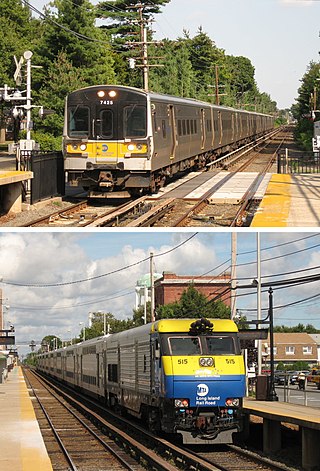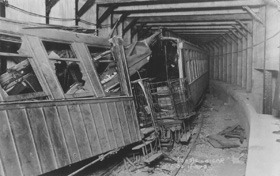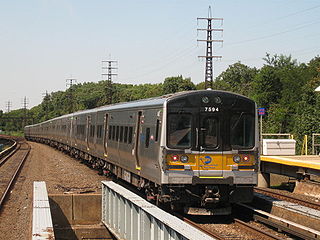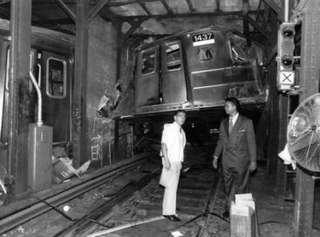Aftermath

After the crash, two inquiries were made into the causes of the collision. Kiefer was placed under arrest at his home, while Markin was questioned and then released by police. [9] Kiefer was arraigned, then released on bail, on February 21. [10]
The mayor of Rockville Centre called for automatic train control systems to be installed. [11] At a New York Public Service Commission hearing less than a week later, the LIRR offered to install train stop devices at the entrances to the gauntlet track, which would derail trains if they passed the red signals. Concurrently, a Nassau County grand jury was considering a charge of negligence against Kiefer. [12]
The elevated viaduct near the crash site opened on July 17, 1950, exactly five months after the crash. [7] The completion of the segment of elevated viaduct also included the opening of a new elevated Rockville Centre station. 7,000 people attended the opening ceremony, including 2,000 residents of Rockville Centre. [7]
Kiefer, who had worked for the LIRR for 27 years, was suspended from the LIRR without pay and faced a criminal trial after the collision. [13] Were he to be convicted, he could have been sentenced to no more than 15 years in prison. [14] At the trial, Markin alleged that Kiefer had passed the red signal west of Banks Avenue, even though Markin's train had the right of way. [15] Kiefer argued that he had lost consciousness in the moments leading up to the crash due to hypertension, [13] and that he had lost alertness soon after passing Lynbrook station. [4] : 105 His defense attorneys stated that the gauntlet track was dangerous because it forced two trains to share the same right-of-way. [13] On September 27, 1950, he was declared not guilty of all charges. [4] : 105 [13]
Kew Gardens train crash
The Kew Gardens train crash, which occurred only nine months later, killed 78 people and injured 363, surpassing the Rockville Centre crash as the deadliest crash in LIRR history. [4] : 105 [16] This crash was also caused by a motorman overrunning a red signal. [16] The two incidents, combined, killed over 100 riders and resulted in renewed scrutiny of the LIRR's infrastructure. [17] At the time of the two crashes, the LIRR had suffered from years of underinvestment, as most cars were built during the 1910s. The company had been prevented from increasing fares between 1918 and 1947 by the Public Service Commission, despite increased operating costs. In 1950, the LIRR had already filed for bankruptcy reorganization. [18]
In an investigative report published in response to the Rockville Centre crash, the Public Service Commission found that fatigue and a lack of proper crew procedures were elements in both the Rockville Centre and Kew Gardens crashes. The commission suggested six improvements that could be made to the LIRR, including signal improvements and automatic train control. [19] After the crash, the LIRR began a $6 million program to install Automatic Speed Control (ASC) on its tracks. [20] The first segment of ASC went into service in May 1951. [21] The Pennsylvania Railroad (the then-owner of the LIRR) terminated the bankruptcy and began a 12-year improvement program at a cost of $58 million. The LIRR was exempted from much of its tax burden and gained freedom to charge realistic fares. [18] Ultimately, the LIRR became reorganized as part of the Metropolitan Transportation Authority, which was formed to manage the LIRR and still operates it. [22]













